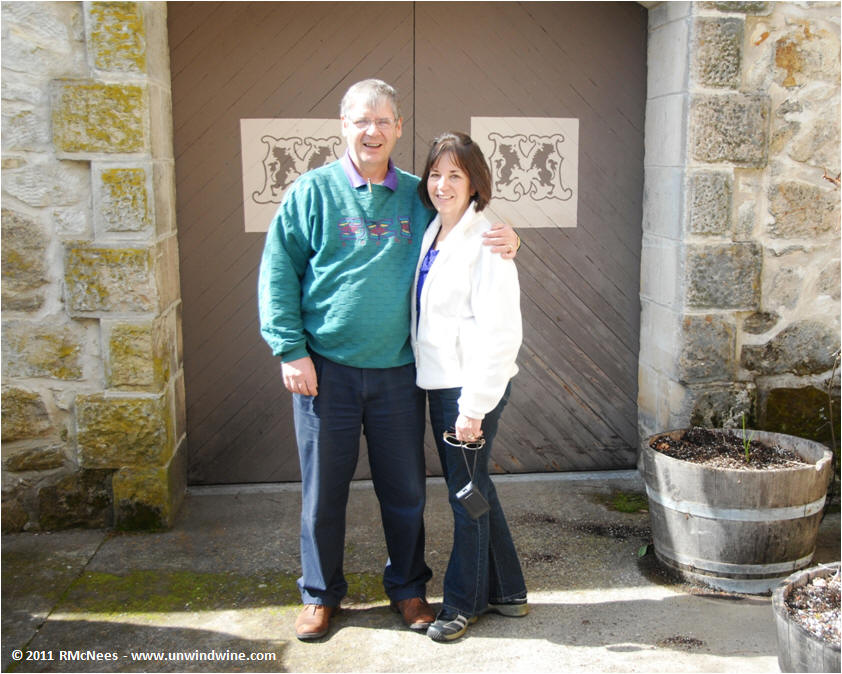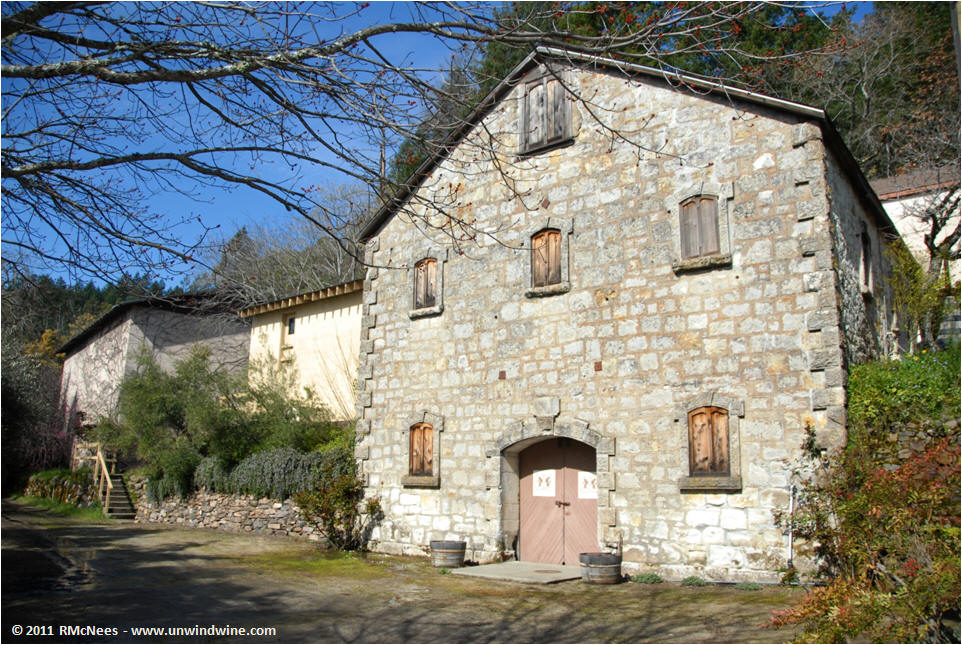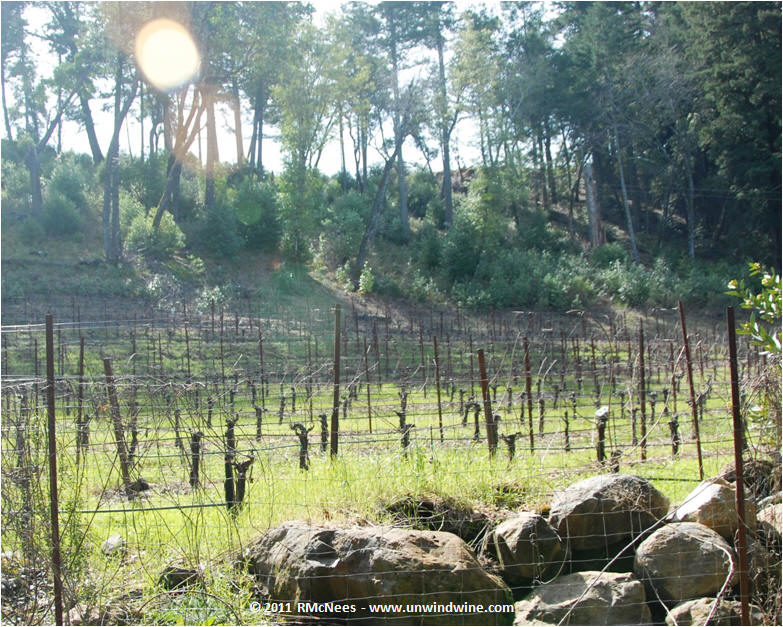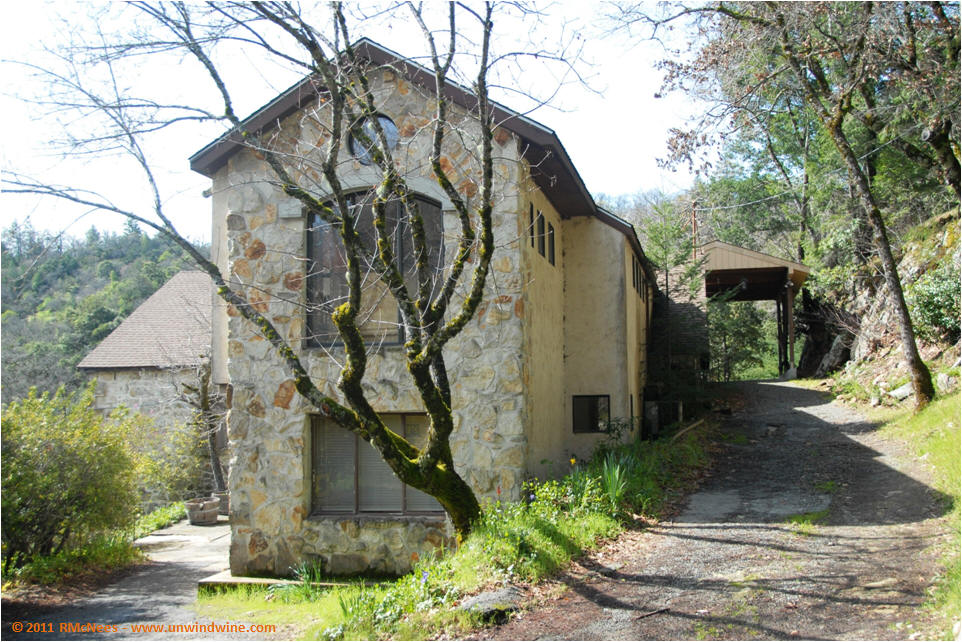Special Silver Oak Birthyear wines for Festive Holiday Open House
Son Alec and d-in-law Viviana hosted a festive holiday open house so I brought from our cellar two special bottles - birthyear vintage wines of Silver Oak, labels. Tonight was a fitting occasion for a birthyear vintage bottle for Alec and Viv since this is their first holiday in their new home and as a family with their baby daughter.Every wine lover, and even casual wine folks know Silver Oak. I'd call it a cult wine since it has such a large devoted following but it has such broad appeal that I don't think cult does it justice.
Ray Duncan founded Silver Oak with Justin Meyer in 1972, it’s now owned and operated by Ray’s sons, David and Tim. Silver Oak is famous for their Napa and Sonoma Cabernet Sauvignons that aged in oak before release introducing many to the effect and impact it has on a quality California Cabernet. Silver Oak have large 40000 case production and do a remarkable job managing their signature Oak profile, much like Caymus and some others.
Silver Oak became notable for aging their wines exclusively in American oak, determining that it is best suited and most applicable to achieving the flavor profile that has become synonymous with the brand. Silver Oak have a reputation for producing exceptional, food-friendly wines that are both drinkable upon release and worthy of cellaring for decades to come.
 We had the unique pleasure of visiting and touring the Cooper's Oak Winery and OAK Cooperage, source of their distinctive American Oak barrels during our Missouri Wine Experience last year.
We had the unique pleasure of visiting and touring the Cooper's Oak Winery and OAK Cooperage, source of their distinctive American Oak barrels during our Missouri Wine Experience last year.
Silver Oak's flagship winery and vineyards are in the center of Napa Valley. They also operate vineyard properties, winemaking facilities, tasting rooms and s cooperage in Sonoma County, Alexander Valley.
Silver Oak are unique among most large production Napa and Sonoma producers in that they focus primarily on the production of just one wine from each appellation: Silver Oak Napa Valley and Silver Oak Alexander Valley Cabernet Sauvignons.
Robert Parker writes in Wine Advocate: "One of America's favorite Cabernet Sauvignon producers, Silver Oak Cellars produces over 40,000 cases of their Alexander Valley and Napa Valley cuvees. As I have said so many times in the past, it is hard to dislike a Silver Oak Cabernet as they are ripe, deliciously well-oaked, soft, plump, multi-layered, and silky."
We served Silver Oak birthyear vintage bottles at their gala Covid restricted minimized wedding celebration dinner.I featured that festive celebration dinner and wine flight in these pages in this blogpost, Big Bottle Birthyear wines for Wedding Celebration.
We then served Alec's birthyear vintage Silver Oak special single vineyard select Bonny's Vineyard Cabernet from a large format six-liter bottle at their wedding celebration weekend a year later, featured in this blogpost, Big Bottle Birthyear wines for Wedding Celebration.
We served a special large format (six liter Imperials) birthyear bottle of Silver Oak (Bonny's Vineyard) for that gala event. We also served Silver Oak Bonny's Vineyard from the 1982 vintage at our eldest son Ryan's wedding, as well as several other birthyear special wines. The single vineyard designated label is very rare given the exclusivity of small production from the 2 acre vineyard.
This has become the custom in our family celebrations, we served a couple of large format six liter bottles of wine from our kids' birthyear vintage from our cellar. We did so at each of their weddings
I've written often about our cellar and our collection of verticals, horizontals, big large format bottles and birthyear vintages. And I've written about 'signature' producers featured in that collection - Silver Oak is one of those signature producers. Our affinity and reverence for this producer and their wines spans decades, and memorable family events and celebrations. According to our Cellartracker records, our Silver Oak cellar holdings still consists of 49 bottles and 2 pending in 23 spanning different vintages/labels) wines, including large format magnums of each of the four kids' birthyears, and another remaining six liter bottle of Bonny's vineyard like the one we served at their wedding welcome reception.
Alec and Viv served up a broad selection of cheeses, charcuterie,
bruschetta, shrimp cocktail and dips - a great showcase accompaniment to
these aged wines. They also served a selection of sparkling wine, white
and red wines including Stag's Leap Artemis, Orin Swift Saldo.
Tonight,
these wines actually showed better than that earlier tasting, likely
due to bottle variations or provenance of aging over two decades since
they were acquired at auction over that period of time.
Silver Oak Napa Valley Cabernet Sauvignon 1990 Alexander Valley 1991
Both of these aged bottles, at 31 and 32 years were well preserved with perfect labels, foils, and importantly, ideal fill levels half way in the neck, reduced less about 3/8 inches from being perfect fill, and near perfect corks.
Producer's notes on this release: "The 1990 Silver Oak Napa Valley Cabernet Sauvignon has a deep tawny
color at its core with light rust edges. The fading coconut
characteristic is complemented by molasses and freshly sawn redwood and
rose petals. It has a light entry but is soft and inviting with medium
depth and cedar flavors on the mid-palate. It has a focused and somewhat
tapering finish of raspberry, proving to be an elegant and balanced
wine with solid back-end structure. Decanting may be necessary due to
light sediment. Enjoy now."
Winemaker Notes: "The
Napa Valley Cabernet Sauvignon has an intense ruby-red color and has
the classic Silver Oak nose of cassis, blackberry jam, violets,
chocolate, roasted coffee and ginger. This wine is full and rich in the
mouth with a very long, slightly tannic finish."
Robert Parker gave this release 93 points writing in Robert Parker's Wine Advocate back in 1994, "The 1990 Napa Cabernet exhibits a Graves-like bouquet of tobacco, cassis, minerals, and spice. Chewy and full-bodied, with stunning extraction of fruit, this velvety wine should drink well for 12-15 years."
While past its prime, apex of its
drinking window, this will not improve any further with aging, but is
holding its own and will likely remain at this level of its drinking
window for a couple more years.
The black cherry and black berry fruit was subdued, somewhat Bordeaux like with accent by notes of spice, black tea and tobacco leaf with tangy acidity and soft moderate tannins on the lingering tangy finish.
This was more complex and concentrated but more subdued than the bright more tangy acidic bright expressive 1991.
RM 89 points.
https://www.cellartracker.com/notes.asp?iWine=20741
https://www.silveroak.com/
Silver Oak Alexander Valley Cabernet Sauvignon 1991
Producer note; "The 1991 Silver Oak Alexander Valley Cabernet Sauvignon has a dense, rich, crimson hue with slight bricking. The aromatics are complex and very interesting with notes of sandalwood, caramel, black pepper, cedar and strawberry fruit. It has a moderate entry, with espresso bean flavors and a finish buttressed by fresh acidity. On the finish, leather and Roquefort linger on the palate. Decanting recommended due to light sediment. Enjoy now."
Winemaker Notes: "The 1991 Alexander Valley Cabernet Sauvignon has a youthful glow, with an opaque crimson hue and no signs of bricking. It offers aromas of blackberry compote and sandalwood. It is a full-bodied wine upon entry, but is dominated by ample acidity and coffee flavors on the mid-palate. The finish has moderate length, lively tannins and flavors consistent with the mid-palate. Decanting suggested."
This label release was awarded Robert Parker's Wine Advocate, and Wine Spectator, one of their *Highly Recommended, Top 100 Wines of 1995*.
Dark ruby color, medium full bodied, bright full expressive tangy dark plum, cherry and black currant fruits with herbs, spics and notes of sweet oak on the acidic long finish.
https://www.cellartracker.com/wine.asp?iWine=25548
@SilverOak


























